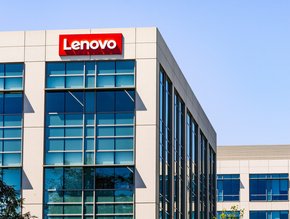The cutting edge: Edge computing trends to watch in 2023

A result of the growing number of connected devices, including Internet of Things (IoT) devices, that generate massive amounts of data, edge computing enables data to be processed at the source rather than being sent to a centralised data centre, reducing the latency and increasing the speed of data processing. This results in real-time insights, improved decision-making, and increased efficiency.
The growing demand for edge computing is driven by various factors, including the increasing number of IoT devices, the growth of 5G networks, and the need for real-time data processing. The growth of 5G networks has enabled the deployment of edge computing solutions in new applications, such as autonomous vehicles and smart cities. The edge computing market is expected to grow significantly in the coming years, with some experts estimating that the global edge computing market will reach US$132mn by 2028.
Below, we take a look at some of the edge computing trends to watch in 2023...
1: Edge spending to continue
According to research by ReportLinker, the edge computing market will grow at a compound annual growth rate (CAGR) of 21.6% between 2022 and 2028 to hit an estimated $132.11 million. The "2022 Global Edge Computing Market report" put future growth even higher, estimating the market will hit $90 billion by 2030.
2: The rise of 5G
5G will deliver the ultra-low latency required for many edge computing applications. Improvements in networking speeds open possibilities for far-away sensors to instantly give updates about the connected devices. That increase in real-time processing will require new equipment with enhanced capabilities.
3: More and more data
Market and consumer data firm Statista estimated the number of IoT devices worldwide will jump from 15.1 billion in 2023 to 29.4 billion in 2030. IDC put the figures even higher, estimating that by 2025 there will be 55.7 billion IoT devices, generating nearly 80 zettabytes of data.
4: Edge is a target
With the growing number of IoT devices and edge computing use cases, threat actors are increasingly seeing them as prime targets. The AT&T Cybersecurity Insights Report: Securing the Edge found that 74% of the security, IT and line-of-business leaders they surveyed said the likelihood of their organisation being compromised was likely.
5: Containers to be key
Containers and Kubernetes make an ideal platform for the edge, and hyperscale cloud providers are taking note. Containers and container-native storage can provide core services, persistent storage, high availability, and durability. It also can enable seamless migration between the cloud and edge with minimal effort.
6: 6G on the horizon
Sixth-generation wireless, or 6G, networks will leverage higher frequencies and higher capacity than 5G. And just as 5G provided capabilities that boosted edge computing and supported new use cases involving edge computing, 6G will offer new possibilities, with distributed computing to play a major role.
- Flexential: Momentum Report Highlights Hybrid IT InnovationCloud & Cybersecurity
- Lenovo: IT Leaders Set to Further Increase AI InvestmentsIT Procurement
- Dell Technologies: Firms Expect AI to Transform IndustriesAI & Machine Learning
- Coca-Cola & Microsoft Partner to Accelerate Cloud and Gen AICloud & Cybersecurity







